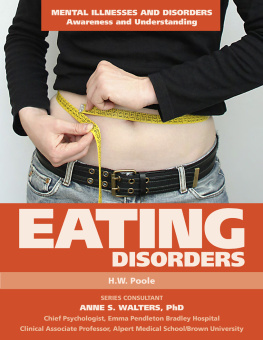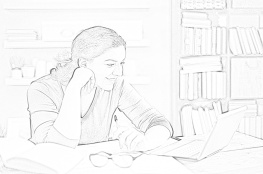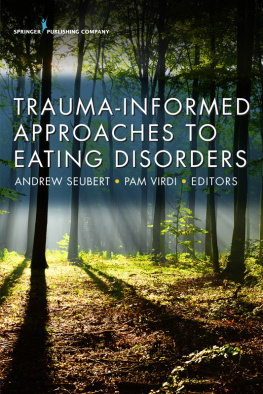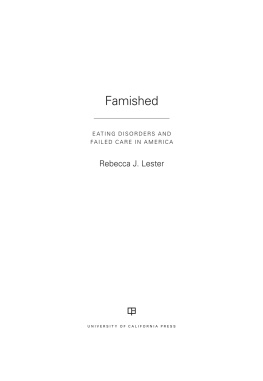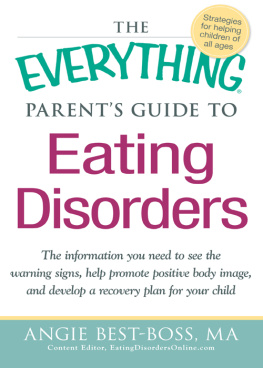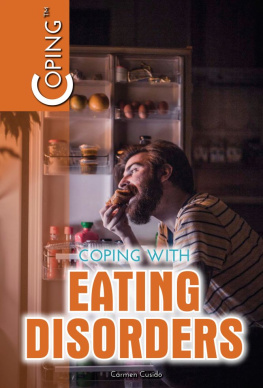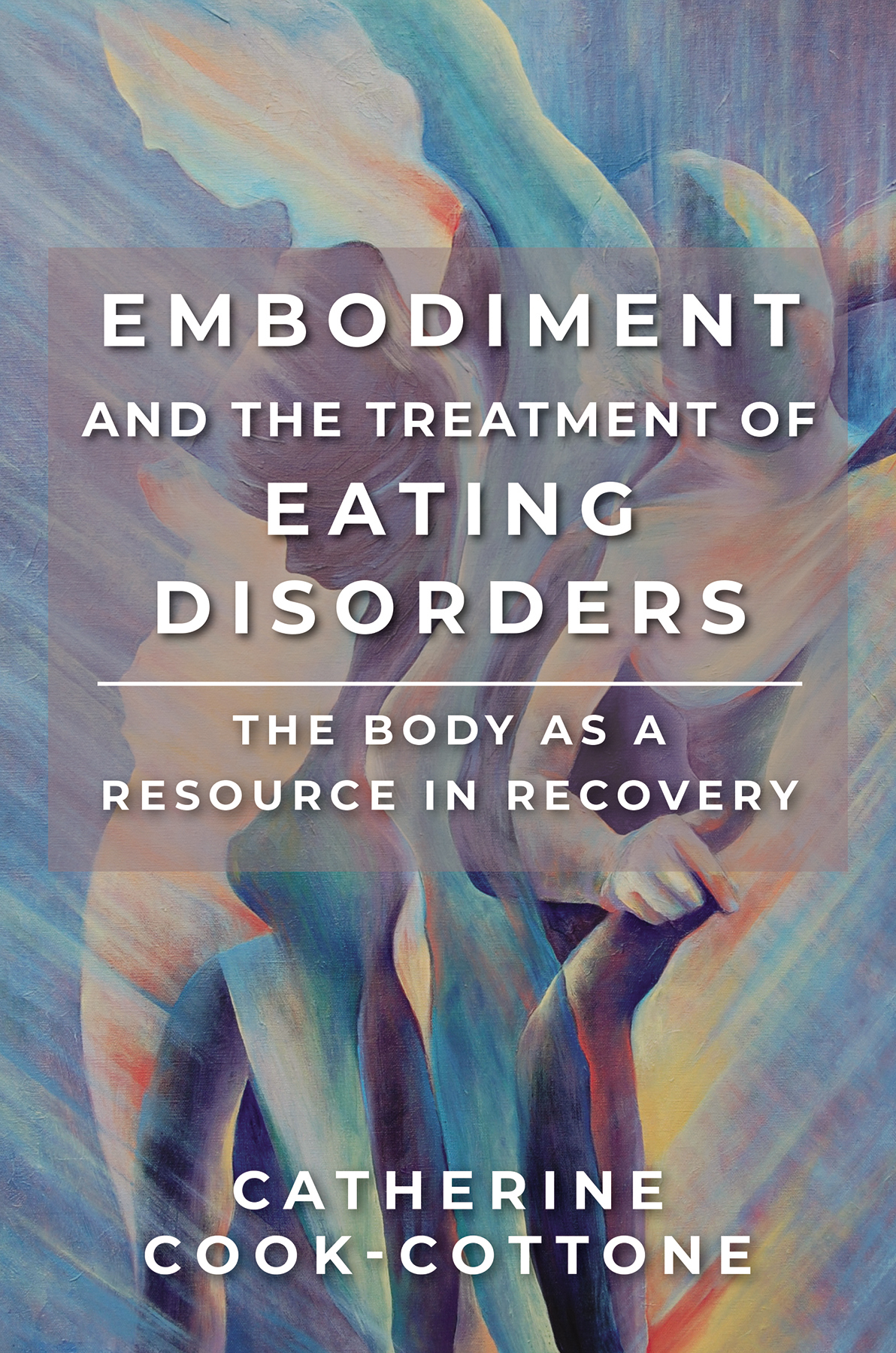Contents
Guide
Page List
EMBODIMENT AND THE TREATMENT OF EATING DISORDERS
The Body as a Resource in Recovery
CATHERINE COOK-COTTONE
FOREWORD BY TRACY TYLKA

A NORTON PROFESSIONAL BOOK
This e-book contains some places that ask the reader to fill in questions or comments. Please keep pen and paper handy as you read this e-book so that you can complete the exercises within.
I believe that each of us has within us the capacity for an embodied
experience of this one beautiful and precious life.
This book is dedicated to the clients who are ready to leave disordered eating behind
and take on the courageous path toward embodiment.
This is not the easy path. It means being-with and working-with all of the
sensations, emotions, and experiences life offers.
It includes an authoring a life story that integrates vulnerability, failures,
victories, and ease. Embodiment requires mindful self-care, the kind of self-care that
is woven into each hour of each day.
It asks that relationships and love come from the whole selfbody, heart, and
mind. More, it means living into a life filled with meaning and purpose.
I dedicate this book to the clients who are realizing that the way out
is not just through, but inward; toward the embodied human
that they were truly meant to be.
I also dedicate this book to the beautiful practice of yoga.
The poem What If? captures the essence of the embodied possibility that
yoga has brought to my own recovery and growth.
Thank you yoga for all you have given me.
What If?
by Ganga White
What if our religion was each other?
If our practice was our life?
If our prayer was our words?
What if the Temple was the Earth?
If forests were our church?
If holy waterthe rivers, lakes and oceans?
What if meditation was our relationships?
If the Teacher was life?
If wisdom was self-knowledge?
If love was the center of our being
1998 Ganga White, whitelotus.org, All Rights Reserved. Reprinted from Yoga Beyond Belief,
by Ganga White. Used with permission.
CONTENTS
What drew you to this book? Perhaps you feel limited by the clinical treatments available for eating disorders. Perhaps these treatments have been helpful, but you feel that something is missing that could facilitate and sustain progress and recovery. In her book, Embodiment and the Treatment of Eating Disorders: The Body as a Resource in Recovery, Dr. Catherine Cook-Cottone identifies this missing piece as embodiment and presents her embodied approach to treating eating disorders (EAT-ED).
Embodiment involves being-with and working-with all of the sensations, emotions, and experiences life offers. Embodiment is experiencing the body, heart, mind, soul, and relationships as intertwined and living a life filled with meaning and purpose. To be embodied necessitates regular and mindful self-care, as embodiment can be regularly disrupted by external and internal factorsfor example, being objectified and internalizing societal beauty ideals.
How are embodiment and eating disorders connected? As the EAT-ED elucidates, eating disorders represent disrupted embodiment. Rather than being intertwined, the body (including its various needs and emotional experiences) becomes a target of the mind. The mind views the body as the enemy. Harsh criticism, withholding of nourishment, and excessive and harmful physical activity are punishments to a body believed to be weak and uncontrolled. The authentic, lived experiences of the body are avoided. Disrupted embodiment is a simplified yet destructive way of beingyet it makes sense to those with eating disorders. A life without symptoms is perceived as unmanageable and frightening.
How then can we help those with eating disorders move towards embodiment? Recovery extends beyond the process of decreasing symptoms to reconnecting with the body. The shift from disorder to positive embodiment is carefully explicated in the EAT-ED. The body comes to be viewed as a source of strength and wisdom rather than an object to control.
To clarify, the EAT-ED does not abandon what we know to be safe and effective interventions. Rather, it gives meaning to these interventions and the importance of recovery. While meal plans, regulated exercise, and avoidance of binges and purges can help decrease symptoms, they dont reveal the importance of recovery. Recovery can be more fully achieved by engaging in practices that promote positive embodiment. Vignettes and clinical tools are provided to facilitate positive embodiment through four pillars of embodied practice: (a) mindful self-care, (b) being-with and working-with what is present in the moment, (c) honoring effort and struggle (i.e., self-compassion) and (d) cultivating mission and purpose.
These pillars provide present-moment skills for being-with and working-with the overwhelm that emerges in treatment. Scheduled pleasant events (mindful self-care) create direction and predictability. Knowing a reason for being and/or mission (a why) serves as a rescue line toward recovery, as it guides the development of realistic, intentional plans that are based on values, purpose, and personal meaning. Mindful awareness and listening to and connecting with internal experiences promote interoceptive awareness. Clinical examples, practice guides, and scripts are integrated throughout to facilitate the development of these skills, and the content comes to life. Throughout, Catherine Cook-Cottone calls attention to and honors the various authors, researchers, and therapists who unknowingly contributed to its foundation.
Interacting with Catherine is one of the great joys my life. We regularly connect and present together at conferences. Catherine truly embodies her workshe welcomes her physical and emotional experiences, directs her efforts toward meaning and purpose, and fully embraces mindful self-care, even when it is difficult to fit in her busy life as a professor, researcher, licensed therapist, editor, advisor, mentor, yoga instructor, non-profit business creator, scale developer, and more. Catherine is genuine, insightful, brilliant, inspirational, and innovative. Our discussions are therapy for my work, body, mind, and soul, and I leave invigorated, ready to do embodied, meaningful work.
Reading this book was no exception. I waited for winter break, when I could fully immerse myself in it. The day I started reading, I found out that my (routine) mammogram was abnormal, which was followed by more imaging, an ultrasound, a fine needle aspiration, a biopsy, and then waiting for the results. During this trying time, I found Catherines book to be a gift. I highlighted content on nearly every page. It helped me rediscover my why and view my body as a source of strength and wisdom rather than something to control, scrutinize, and manage. I ended the book feeling stronger and more embodied, even before knowing the (negative) biopsy results.
Quite simply, this book can revolutionize the treatment of eating disorders and help all individuals, even professionals in this field, toward embodiment.
Tracy L. Tylka, Ph.D., FAED
Professor, Department of Psychology
The Ohio State University


